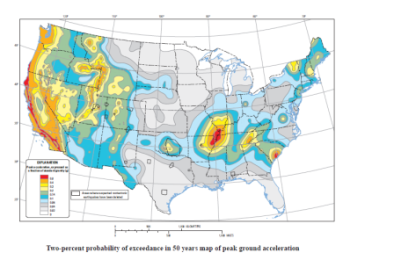On 17 July 2014, USGS released several Updated National Seismic Hazard Maps, accompanied with a report for the 2014 Update of the United States National Seismic Hazard Maps.
The report, “Documentation for the 2014 Update of the United States National Seismic Hazard Maps,” highlights the increasing role of geodetic data, derived primarily from high-accuracy, continuously operating GPS reference stations, in assessing earthquake risk.
“Modern GPS data provide more spatially complete observations on ground deformation, cover a period of 25 years (from 1987–2012), and record the most recent plate-loading rates with submillimeter per year precision, which is more precise than data provided by geologic studies,” the USGS researchers wrote in their report.
According to the maps, all US States have some potential for earthquakes, with peaks along the West Coast, intermountain West, and in several active regions of the central and eastern United States. USGS made forecasts concerning the percentage of risk for every state and made estimations on 16 states at highest risk.
These outcomes could encourage the establishment of a West Coast Earthquake Early Warning (WC-EEW) system, called ShakeAlert, proposed by USGS along with partners among universities and state and local agencies. Shake Alert would work for the highest-risk areas of the United States, providing GPS reference networks to the current earthquake monitoring capabilities of the Advanced National Seismic System. The system would provide safety benefits in homes and schools, computer systems and machinery, preventing loss of life or damage to property by helping in determining emergency preparedness plans.

